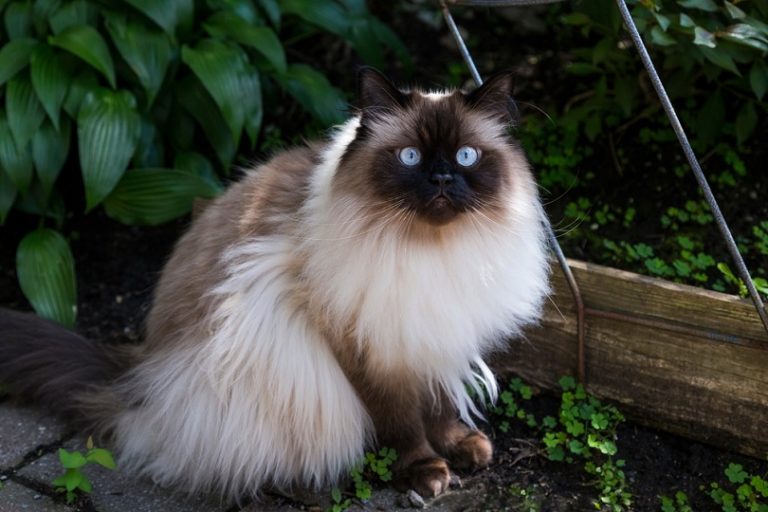
They are gentle calm and sweet-tempered and possess a playful side as well. Runny eyes can be a.

It has an average lifespan of 10 to 15 years.
How long do indoor himalayan cats live. Himalayan cats live just as long if not longer than other feline breeds. The average lifespan of Himalayans is 15 years or longer reports PetWave. Himalayans are known to be polite and intelligent and with friendly introductions tend to get along perfectly with other felines or canines in your household.
Himalayan cat lifespan. Himalayan cat is the most beautiful breed in the world and is a long-lived breed. Life expectancy often varies.
Outdoor and Indoor cats usually have different lifespans due to various factors such as disease and exercise etc. It has an average lifespan of 10 to 15 years. Life Span According to vets cats usually live 10-18 years.
Typically the life span of a Persian is 15 years and up. Average Litter Size A Persian litter size can be Himalayan cat - Wikipedia the free encyclopedia. How long do Himalayan cats live.
The average lifespan of Himalayan cats is 15 years or more. Despite generally living long lives they are genetically predisposed to quite a few health problems. Coat and Color.
Dense undercoat with a long overcoat that comes in pointed colors and patterns. Some colors include gray blue chocolate lilac and cream. 15 years or longer.
9 - 14 pounds. 7 - 11 pounds. Average 1000 - 2500 USD.
Himalayan kittens pet quality cost between 800 and 1500 depending on the coat colors and the bloodline. Adults are typically less expensive than kittens. Finding the perfect Himalayan.
Like many long-haired cats Himalayans need to be brushed daily to keep their coats looking their best and healthiest. In addition they may need their face wiped daily depending on the cat. Bathing a Himalayan is also recommended by some breeders to help reduce the amount of oil on the cats fur and skin.
A seal point Himalayan lounging. Himalayan cats are good indoor. Most research has shown that on average healthy indoornon-feral cats live an average of eleven to sixteen years.
And many live much longer. This is especially pertinent now with roughly 20 percent of cats in the US estimated to be 11 years or older. Anyone with a cat in their life will know that theyre probably going to stick around for a while with the average lifespan of indoor house cats these days hitting an impressive 12 to 15 years.
With proper health care the Himalayan cat will live an average of 8 to 15 years. The Himalayans top coat is silky with a wooly undercoat. They are not as prone to matting as Persians but the issue is still present.
Both bristle brushes and wide tooth combs should be used. Bathing is sometimes required and often Himalayan owners must have professional help to keep their animals coat consistently well groomed and healthy. Some show cats are bathed daily.
Runny eyes can be a. Himalayans are a medium-sized sub-breed of longhair cat. They are almost identical to Persians except that they have brilliant blue eyes and the colorpoint markings of a Siamese.
That means they have creamy bodies with a darker face ears feet and tail. Adults grow to be 7-12 pounds and have an average lifespan of 9-15 years. Long all over the body.
Dense undercoat giving the coat full volume. Ruff should be immense. Variations in coat shall be recognized.
Himmies as they are sometimes called are wonderful indoor cat companions. They are gentle calm and sweet-tempered and possess a playful side as well. Like the Siamese Himalayans love to play fetch.
Hello everyoneThis is how we shave one of our cats Himalayan Rag-doll once his hair gets too long. As you can see he loves it. We do this usually twice.
In personality the Himalayan cat is very similar to the Persian cat. The sweet temperament docile nature and affection for the owners is the same as the Persian cats. The Himalayan is a strong cat breed with a robust built but it has a low tendency for activeness and playfulness.
It likes to sit in the lap and petted for several hours. Cats who spend significant unsupervised time outdoors tend to survive to be about 7 years old while indoor-only cats can be expected to live to around 14 years of age. These numbers may seem low but they represent an average of the lifespans of ancient well-cared-for kitties.
Unfortunate individuals who died early from disease or accident. And everybody in between. Cats come in a wide variety of shapes and sizes.
As such different cat breeds have different life expectancies. The average lifespan of a cat depends on a lot of variables – from diet and exercise to their overall health to their breed. To get a better idea of your cats expected lifespan check out this list of cat breeds and average ages.